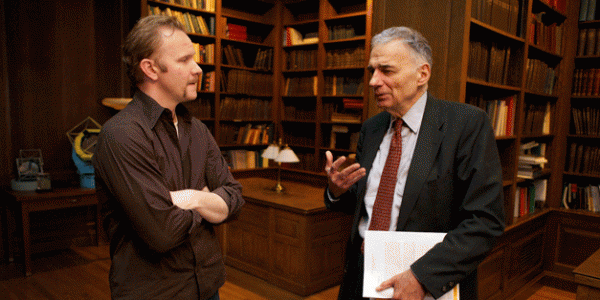In his latest documentary he turns his attention to the potent power and insidious influence of advertising in today’s world. In particular he looks at the practice of product placement in movies, and attempts to examine just how powerful the marketing industry has become within the film industry. It’s a multi-billion dollar industry that is often driving how scripts are re-written. He interviews fellow filmmakers like J J Abrams (Super 8, etc), Brett Ratner (the Rush Hour series), Tarantino, and Peter Berg (The Kingdom, etc) about the issue of product placement and how advertising brands are changing the way movies are made.
Spurlock talks to high-powered advertising agents, lawyers, and corporate types, to get a diverse range of opinions on the subject. He even talks to consumer advocate Ralph Nader and author Noam Chomsky, who for decades has been talking about the corporatisation of America. They both appear to be good sports and go along with Spurlock’s tongue-in-cheek approach.
Borrowing the concept of cross promotional marketing from big budget Hollywood blockbusters like Iron Man, Spurlock sets out to finance his $1.5 million documentary about product placement purely through sponsorship and product placement. He is even willing to offer a company above the title branding for the right amount. Spurlock approached some 650 companies, but only a handful would agree to be part of the movie. Spurlock even includes humorous commercials for these brands as part of the movie.
Is this a legitimate undertaking, or is he compromising his artistic integrity? As he becomes buried beneath a raft of contractual obligations, Spurlock’s quest raises some interesting questions about creative freedom and the fine line between art and commerce, which is becoming increasingly blurred.
Spurlock’s wide search for answers takes him to Sao Paulo, a city that has outlawed the “visual pollution” of eyesore billboards and advertisements on public transport. He also looks at the worrying need for schools to seek out advertising to make up for the budget shortfalls.

